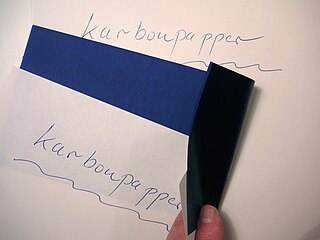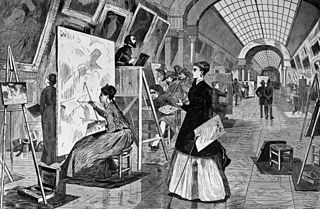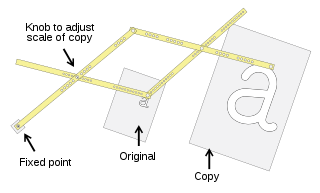 W
WBefore the development of photographic copiers, a carbon copy was the under-copy of a typed or written document placed over carbon paper and the under-copy sheet itself. When copies of business letters were so produced, it was customary to use the acronym "CC" or "cc" before a colon and below the writer's signature to inform the principal recipient that carbon copies had been made and distributed to the parties listed after the colon. With the advent of word processors and e-mail, "cc" is used as a merely formal indication of the distribution of letters to secondary recipients.
 W
WA copyist is a person who makes copies. The term is sometimes used for artists who make copies of other artists' paintings. However, the modern use of the term is almost entirely confined to music copyists, who are employed by the music industry to produce neat copies from a composer or arranger's manuscript.
 W
WIn molecular biology, DNA replication is the biological process of producing two identical replicas of DNA from one original DNA molecule. DNA replication occurs in all living organisms acting as the most essential part for biological inheritance. This is essential for cell division during growth and repair of damaged tissues, while it also ensures that each of the new cells receives its own copy of the DNA. The cell possesses the distinctive property of division, which makes replication of DNA essential.
 W
WLost-wax casting is the process by which a duplicate metal sculpture is cast from an original sculpture. Intricate works can be achieved by this method.
 W
WA manuscript was, traditionally, any document written by hand – or, once practical typewriters became available, typewritten – as opposed to mechanically printed or reproduced in some indirect or automated way. More recently, the term has come to be understood to further include any written, typed, or word-processed copy of an author's work, as distinguished from its rendition as a printed version of the same. Before the arrival of printing, all documents and books were manuscripts. Manuscripts are not defined by their contents, which may combine writing with mathematical calculations, maps, music notation, explanatory figures or illustrations.
 W
WA mimeograph machine is a low-cost duplicating machine that works by forcing ink through a stencil onto paper. The process is called mimeography, and a copy made by the process is a mimeograph.
 W
WA pantograph is a mechanical linkage connected in a manner based on parallelograms so that the movement of one pen, in tracing an image, produces identical movements in a second pen. If a line drawing is traced by the first point, an identical, enlarged, or miniaturized copy will be drawn by a pen fixed to the other. Using the same principle, different kinds of pantographs are used for other forms of duplication in areas such as sculpture, minting, engraving, and milling.
 W
WA photocopier is a machine that makes copies of documents and other visual images onto paper or plastic film quickly and cheaply. Most modern photocopiers use a technology called xerography, a dry process that uses electrostatic charges on a light-sensitive photoreceptor to first attract and then transfer toner particles onto paper in the form of an image. The toner is then fused onto the paper using heat, pressure, or a combination of both. Copiers can also use other technologies, such as inkjet, but xerography is standard for office copying.
 W
WA physical model is a smaller or larger physical copy of an object. The object being modelled may be small or large.
 W
WA pointing machine is a measuring tool used by stone sculptors and woodcarvers to accurately copy plaster, clay or wax sculpture models into wood or stone. In essence the device is a pointing needle that can be set to any position and then fixed. It further consists of brass or stainless steel rods and joints which can be placed into any position and then tightened. It is not actually a machine; its name is derived from the Italian macchinetta di punta. The invention of the tool has been ascribed to both the French sculptor and medallist Nicolas-Marie Gatteaux (1751–1832) and to the British sculptor John Bacon (1740–1799). It was later perfected by Canova. However, similar devices were used in ancient times, when the copying of Greek sculptures for the Roman market was a large industry.
 W
WA replica is an exact copy, such as of a painting, as it was executed by the original artist or a copy or reproduction, especially one on a scale smaller than the original.
 W
WA scrivener was a person who could read and write or who wrote letters to court and legal documents. Scriveners were people who made their living by writing or copying written material. This usually indicated secretarial and administrative duties such as dictation and keeping business, judicial, and historical records for kings, nobles, temples, and cities. Scriveners later developed into public servants, accountants, lawyers and petition writers, and in England and Wales, scrivener notaries.